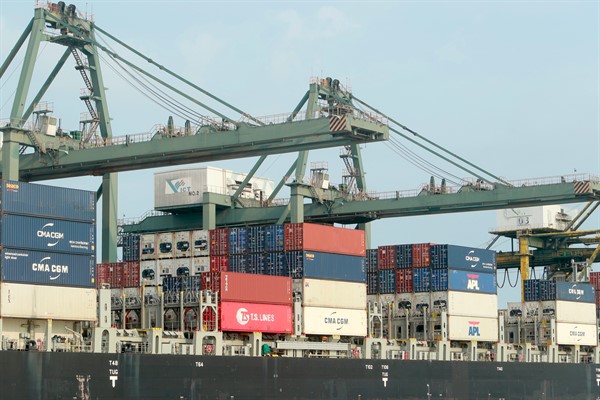Capping eight years of tough, on-and-off negotiations, representatives from 15 countries across the Asia-Pacific gathered in a virtual meeting last month to sign a gargantuan new free trade agreement, the Regional Comprehensive Economic Partnership. Encompassing all 10 members of the Association of Southeast Asian Nations, along with Japan, China, South Korea, Australia and New Zealand, RCEP will cover around 30 percent of both the world’s population and GDP, making it the world’s largest trading bloc. While its trading rules and market access provisions are not as far-reaching as the other main multilateral agreement in the region, the Comprehensive and Progressive Agreement for Trans-Pacific Partnership, or CPTPP, RCEP is still expected to play an important role in Asian countries’ efforts to dig out from the economic wreckage of the COVID-19 pandemic.
A number of officials and commentators have argued that, along with the expected boost to trade and investment, RCEP will foster better overall relations among its signatories. In public remarks days after she participated in its signing, Indonesian Foreign Minister Retno Marsudi spoke of the deal as a sign of hope for “a world of more cooperation and fewer rivalries.” At the same event, Marsudi’s Chinese counterpart, Wang Yi, said that RCEP’s members had sent “a clear message of their shared commitment to openness and cooperation.” Wendy Cutler, a former senior U.S. trade negotiator during the Obama administration, noted the “geopolitical impacts” that would likely result from a group of 15 diverse countries joining together “regardless of their differences and their disputes with other parties in the region.”
Yet it is far from clear that those geopolitical implications will be positive. Without downplaying its significance, RCEP should be seen as one milestone in a decades-long arc of pan-Asian economic integration—a process that, perhaps counterintuitively, has not been accompanied by smoother political and security ties between Asian countries. On the contrary, diplomatic spats and territorial disputes have threatened to undo much of the region’s progress in facilitating greater flows of people, goods, data and services. And in many cases, particularly over the past 10 years, closer economic linkages have served not as guardrails for peace and stability, but as cudgels to be wielded in pursuit of national political aims.

